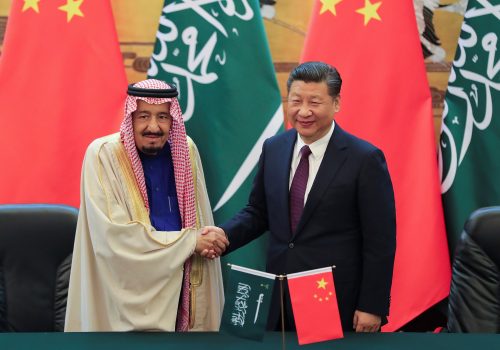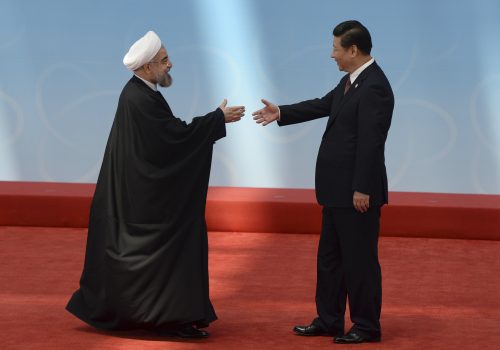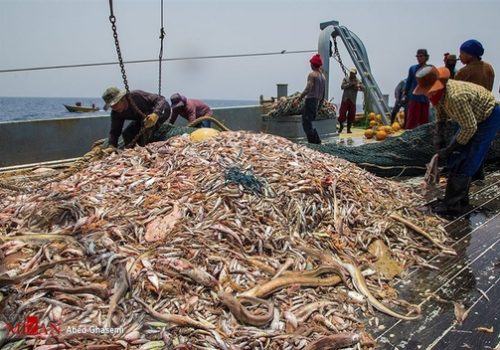How the coronavirus is cementing Iran’s tilt towards China
The Iran-China bilateral relationship has been gaining strategic significance for more than a decade and the coronavirus pandemic appears to have solidified this trend. While US President Donald Trump is offering medical supplies while refusing to lift sanctions on financial transactions with Iran, the Chinese are airlifting supplies and medical personnel to Tehran.
A recent social media spat revealed how invested some powerful Iranian political groups, as well as some businesses, are in the Tehran-Beijing axis.
On April 5, when Kianous Jahanpour, the spokesperson for Iran’s Health Ministry, called Chinese data on coronavirus cases a “bitter joke,” he probably did not expect a backlash. But many Iranian conservatives attacked him and the Chinese ambassador to Iran took to Twitter to downplay talk of a rift.
Just hours after the response, Jahanpour thanked Beijing for standing by Iran’s side during her hour of crisis—even though the disease originated in China and was apparently brought to the holy city of Qom by a Chinese visitor or an Iranian businessman who had visited China on a business trip.
How did China gain such prominence—indeed impunity—in Tehran?
The answer can be found in the growing economic ties between the two countries and in Tehran’s dream of a resurgent Eastern bloc.
China became Iran’s biggest trading partner a decade ago, as US-led sanctions against its advancing nuclear program gained European buy-in. This trend has accelerated with the resumption of US sanctions following the Trump administration’s unilateral withdrawal from the Iran nuclear deal in 2018, which Beijing is a signatory to. Despite the US’s “maximum pressure” strategy, Iranian exports and imports to and from China, respectively, totaled close to $20 billion in 2019, comprising roughly one-fifth of all Iranian exports and one-quarter of its imports. Consequently, looking eastward is no frivolous flirtation for Iran. It is a strategic imperative or is at least portrayed as such.
“We began working with China, because the West, the United States, and its European allies, did not work with us,” said the late Asadollah Asgarouladi, a leading Iranian businessman and the head of the Iran-China Chamber of Commerce (which started in 2001), to this author. After the 1979 Islamic Revolution, American businesses and their European subsidiaries and counterparts left Iran, allowing Chinese businesses to fill the void.
When Iran needed fighter planes to replace those lost in the 1980-88 war with Iraq, Beijing provided F-7 fighter planes, a Chinese version of the Mig-21. When European banks, pressed by US sanctions, were not able to provide the services the Iranian government and its businesses needed, Chinese banks stepped in. When the French were unable to work on Tehran’s subway networks, Iran invited China in 1995 and the Chinese finished the first phase in 1999. Beijing continues to work on this project until the present day.
The relationship has a great deal of logic. China buys Iranian oil and the money is deposited in Chinese banks. Chinese businesses offer services and products to Iran that their American and European counterparts cannot. American and European businesses can hardly find any bank in Europe or North America that would provide them with the services they need to trade with Iran. The combination of Iran’s economic interests, political ambitions, and international isolation has made it an ideal trade partner for China. As for Beijing, they can dictate the terms of exchanges and trade.
Many in Tehran see the partnership as one of equals, where China would not interfere in Iran’s affairs like Western powers—such as the United States—historically had. Conservative members of the Iranian political establishment speak of a new emerging Eastern bloc: an Asian consortium in which Iran is a leading member. They portray their partnership with China as an act of defiance against the West and a leap forward in making Iran the leading regional power, as well as a way of breaking the wall created by sanctions.
China and Iran began speaking the same language during the 1990s, when they dreamed of forging new frameworks for global trade and developing their markets in Asia. The relationship was already singled out as special, following a state visit by then President and now Supreme Leader, Ali Khamenei in 1989. As China initiated the Belt and Road Initiative in 2013, Tehran remembered the glorious days of the Silk Road, when Iran connected Asia to Europe and Africa through land routes. Iranian Foreign Minister Mohammad Javad Zarif has not missed any opportunity to stress Iran’s readiness to join this initiative.
As Iranian businesses learned their ways around Beijing and Shanghai, the Chinese also learned their ways around Tehran and the corridors of Iranian political power. Meanwhile, their European rivals became increasingly confused and frustrated by the political process in Tehran. Even as they returned to Tehran following the implementation of the Joint Comprehensive Plan of Action (JCPOA) in 2016, they faced an altered business ecosystem in which the Chinese enjoyed the support of hardliners and the institutions of power. The relative ease of inking Sino-Iranian oil deals contrasts with the European experience.
French oil company Total’s return to Iran following the lifting of sanctions as part of the JCPOA was nothing but a headache. Despite backing by Iran’s oil minister, Bijan Zangeneh, a new deal took so long to pass through parliament that, by the time it was approved, Total was facing new rounds of US sanctions targeting Iran. Total pulled out and Iranian entities close to Chinese oil interests promptly filled the void.
China has become the primary beneficiary of US sanctions on Iran. These sanctions have driven out any potential competition, providing Beijing with a unique, multi-layered monopoly in Iran. At the same time that Iranian businesses working with the Chinese have survived sanctions, Iranian companies working with Western European and North American companies have had to close their doors. They simply cannot get Western businesses to work with Tehran and, even if they could, the cost of circumventing sanctions is so high that they cannot compete in Iran.
As the Chinese ambassador receives Iranian executives such as the CEO of Mahan Airlines, state media and some Iranian officials have chosen to ignore the fact that their economic partnership with China is influencing domestic politics as well as their international positions. Iranian authorities increasingly favor Chinese businesses while ignoring the plight of Uighur Muslims in China. Iran continues presenting the relationship as a trade partnership. No one mentions that, although Beijing is Iran’s number one export market and the most significant source of imports, Iran is not even among the top 25 trade partners of China. Tehran cannot do without China, but Beijing can do without Iran. The era of equal partnership—if it ever existed—is over. Iran depends on its economic ties with China for survival as it is losing any leverage it could have had due to sanctions.
Iranian officials are hyper-aware of the crucial nature of the China relationship. Mohammad Keshavarzadeh, the Iranian ambassador to China, was recently quoted in state media, as saying, “In this time of sanctions we need to be very careful about what is said about China in Tehran.” He even labelled those criticizing the Iran-China relationship as those “who do not wish well for the regime and the Iranian people.”
It is little wonder, then, that an official like Jahanpour had to retract his earlier comments so quickly. Tehran cannot afford to upset Beijing.
Ali Dadpay is an associate professor of finance at the Gupta College of Business at the University of Dallas in Texas. Follow him on Twitter: @adadpay.
Image: Iranian President Hassan Rouhani and Chinese President Xi Jinping greet children during the welcome ceremony at the Xijiao State Guesthouse in Shanghai, May 22, 2014. REUTERS/Kenzaburo Fukuhara/Pool


